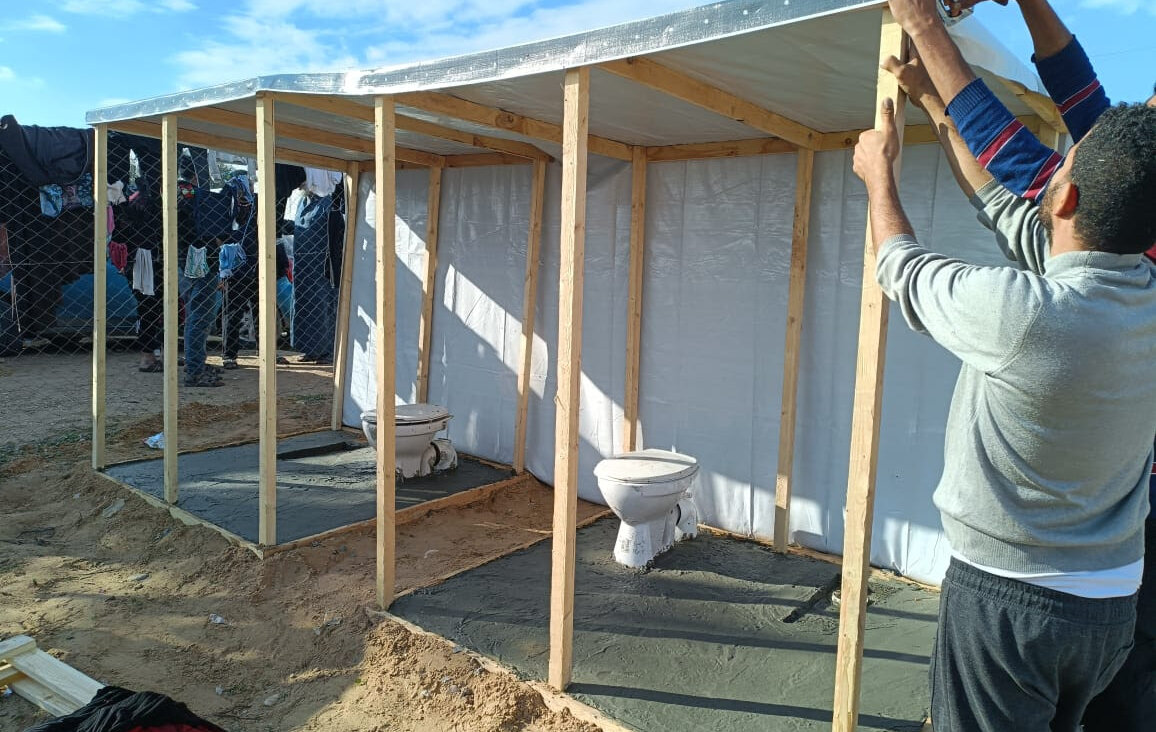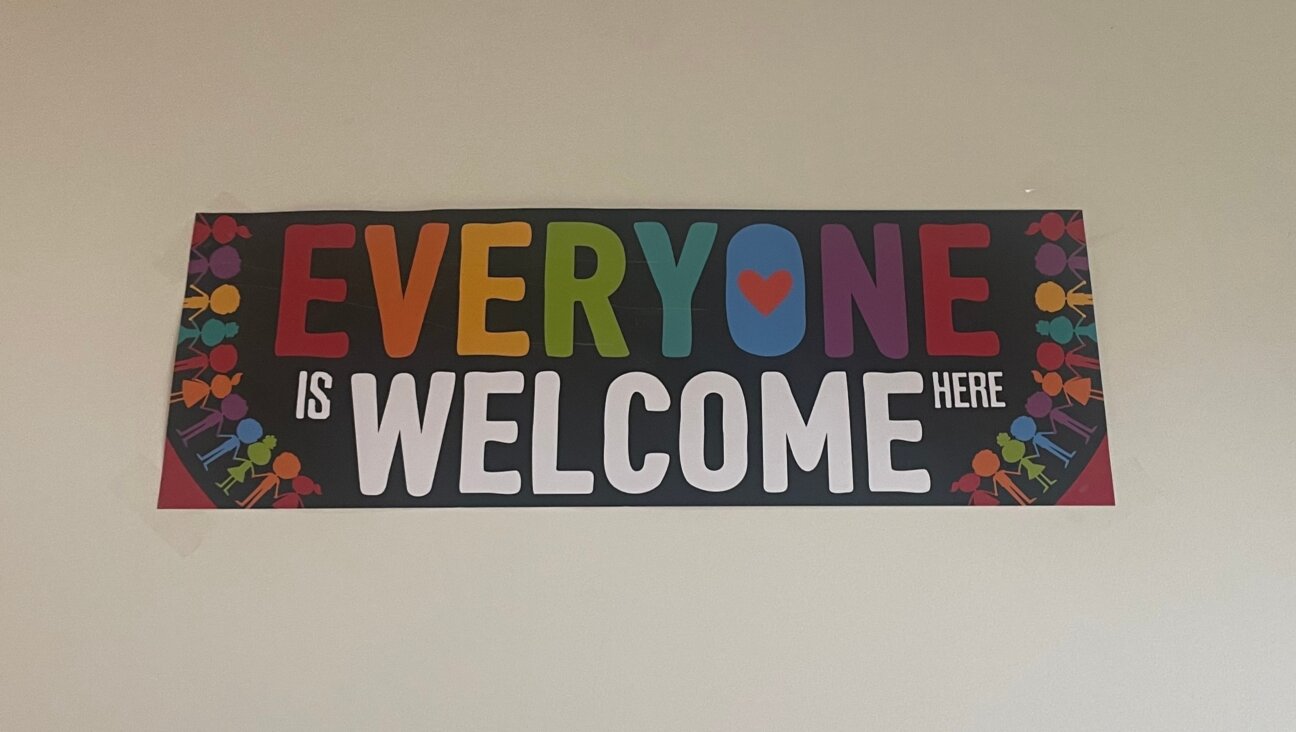Harvey Weinstein tried to pressure NYT’s Jodi Kantor ‘Jew to Jew’
‘She Said’ shows pivotal breakthrough came after Kantor built ‘authentic Jewish connection’ with Weinstein’s accountant

Jodi Kantor, as portrayed by Zoe Kazan, and her family lighting Shabbat candles in “She Said.” Courtesy of Universal Pictures
A pivotal breakthrough in The New York Times investigation of Harvey Weinstein’s serial predation grew out of shared connections to the Holocaust and the Catskills.
It’s one of the most dramatic sequences in the inspiring new film “She Said,” which opens in theaters today: Over red wine in a darkened Tribeca restaurant, Weinstein’s longtime accountant, Irwin Reiter, talks with the intrepid and empathetic reporter Jodi Kantor about how they’re from “the same little corner of the world.”
He is the son of survivors who had tattoos on their arms, she the granddaughter; they both spent summers in rundown Borscht Belt bungalow colonies. “So mysterious, isn’t it,” the Reiter character says, “why some families talk, some don’t.”
At a second secret meeting in the same secluded spot, trust established, the accountant heads to the washroom and leaves his cellphone for the reporter to look at. That’s how The Times got a 2015 document detailing Weinstein’s toxic sexual harassment — the first solid on-record evidence, which opened the gate for publication and formed the backbone of the blockbuster article that spawned a movement.
“We had an authentic Jewish connection,” the real-life Jodi Kantor told me in an interview this week. “It was a way of saying, ‘You and I are a little bit the same.’ Like, there’s some part of us that comes from a world that other people don’t understand. And it’s not just being Jewish. It’s a subset of a subset of a subset of a subset of being Jewish.
“I think it was just so odd and specific,” she said of their connection. “To my astonishment, the movie actually uses the words, ‘Lefty’s’ and ‘Pop-Ins’ — those are two long-vanished restaurants in the Catskills. And when I watched the final cut of the film, I thought, ‘Is anybody going to know what those things are?’ But for the few hundred, or maybe a few thousand, people who might, the depth of the recognition, you know, I think will be really unexpected in a Hollywood movie.”

‘A bit like watching a home movie’
I’ve known Jodi Kantor for more than two decades and we have our own odd and specific connection: as the two Jodi-with-an-i bylines @nytimes.com, we for years each got admiring and angry reader emails intended for the other. We were actually introduced years before she joined me at The Times in 2003, by a woman I went to Camp Yavneh with, whom Jodi knew from the Dorot fellowship. The first day we met, we were carrying the same chartreuse Kate Spade handbag (I got mine at a sample sale).
Jodi’s older daughter, Talia, was born a year before my twins, and we sometimes attended Tot Shabbat together at Congregation Beth Elohim in Park Slope, Brooklyn. Tomorrow, we’ll be at the same bar mitzvah, of the son of a mutual friend who used to be the assistant rabbi at that shul. It’s a small little Jewish and journalism world.
So viewing the film, which chronicles Pulitzer Prize-winning reporting that I was a sideline witness to in real time, was for me also a bit like watching a home movie. The actress who plays Jodi, Zoe Kazan, not only bears an uncanny resemblance to the real reporter — as Carey Mulligan does to Jodi’s reporting partner, Megan Twohey — but embodied many of her mannerisms.
Because of the pandemic, much of the movie was shot in the newsroom where I spent countless hours, and the rendering of Times culture felt deeply authentic. As did the portrayal of many Times characters, from their fundamental fairness to flourishes like the signature chunky necklaces of the brilliant and heroic investigations editor Rebecca Corbett.
(Indeed, when Jodi and I talked via Zoom on Wednesday night, my daughter, peeking over my shoulder, commented that “the movie apartment looks a lot like your actual apartment.”)
‘I don’t feel like I’m watching myself’
Jodi laughed when I asked whether she and Megan were involved in the casting — “I’m pretty sure it’s the height of narcissism to tell the producers ‘so-and-so must play me’” — and explained that the four women did spend a lot of time together, “in real life and on Zoom,” as well as in 1:1 pairs, but that ultimately “you have to let go and give them artistic license.”
“I feel indebted to her because she built this really beautiful character,” the other Jodi said of Kazan. “When I’m watching the character, I don’t feel like I’m watching myself. It’s, you know, it’s not a documentary. But there are specific moments where I’m marveling at how well Zoe is conveying what I felt like.”
She gave as an example the scene in a London cafe where her character is interviewing Zelda Perkins, a feisty former Weinstein assistant who blew the whistle after he assaulted a young colleague in the 1990s — and was pressured into a settlement that not only barred her from speaking about the wrongdoing but did not even allow her to keep a copy of the terms. As in so many scenes of the film, Kazan maintains a calm professionalism, gently guiding the interview with minimal words to allow the source to open up, being a reassuring presence without crossing the line into advocacy, exhibiting empathy but not emotion — neither outrage at the content of the story nor excitement over the achievement of nailing it.
“There’s this flicker or glint in Zoe’s face, where you — you can see the emotional reaction, but it’s underneath this calmer, professional surface,” Jodi explained. “In that moment, she not only made me feel seen, but I think other journalists, too. My hope is that there’s a universality to all the journalist characters in the movie, because they’re doing things that we’ve all tried to do.”

A triumphant ode to journalism
“She Said” is as much if not more about journalism as it is about sexual abuse. Like “All the President’s Men,” it is a triumphant and stunning ode to our industry. For it shows the tenacity and toughness, perseverance and patience required to do the kind of reporting that moves society. It showcases the humanity that is the core of our craft: the connections reporters like Megan and Jodi make with sources like Irwin Reiter and Zelda Perkins — and with each other.
Their reciprocal partnership, Jodi told me, was rooted in an early phone call portrayed in the film. Megan was on maternity leave and not yet involved in the Weinstein story, but Jodi reached out to her, as someone who had covered a lot of sex crimes, for advice on how to persuade people to share such painful stories.
“When I called her, I could tell that something was wrong,” Jodi recalled, “and because I had had postpartum depression, there was something about the tone of her voice where I kind of knew, and on that phone call, I gave her the name of my doctor.
“So the relationship was always reciprocal from the beginning,” Jodi continued. “And it was also always about shared responsibility. There’s the responsibility of the story, which grew and grew and grew as we heard these accounts. And then motherhood is one of the ultimate experiences of responsibility. And so there was this feeling of, like, we’ve got to get the story — and we’ve got to get home to the kids.”

‘Mom, how could that have been allowed to go on?’
The movie ends on Oct. 5, 2017, as a copy editor hits “Publish” on the original Weinstein article. (I highly recommend a reread after watching the film; it’s remarkable to see how months and months of painstaking reporting were so powerfully pieced together.) But another scene from the “She Said” saga seared in my memory did not come until six months later.
It was April 16, 2018, the day a team of Times journalists and Ronan Farrow of The New Yorker were awarded the Pulitzer Prize for Public Service for #MeToo coverage that rippled from Hollywood to virtually every corner of American society. Megan and Jodi framed their acceptance speech through two people “who have no idea who Harvey Weinstein is,” as they put it: Mira Twohey Rutman, whose birth is shown in the film, and Violet Kantor Lieber, who is about 18 months older.
“Years in the future, when we describe to our daughters the abuses we wrote about, they may say: ‘Oh yeah, that still happens all the time,'” Jodi said in a speech that made me cry that day and still does as I reread it. “Or will they be shocked at what will seem like a bygone era, and say: ‘Did people really think that used to be OK back then? Mom, how could that have been allowed to go on? And really, you were there when things changed?'”
Diving into the film’s Jewish subplot
My own daughter, Shayna, who is 15 and saw “She Said” along with her twin brother, Lev, at the Montclair Film Festival, was also struck by the Irwin Reiter scenes in that dark Tribeca bar, especially the accountant’s intensity and jitters. “Is that what it really felt like?” Shayna asked Jodi. “Or do you think it was, like, dramatized for over-dramatic effect?”
The Reiter scenes, Jodi said, “were very true to life,” if compressed — they met many more times. Also accurate, if slightly out of place, was the scene of her family lighting Shabbat candles early in the movie, an establishing shot of sorts for what Jodi describes as “the Jewish subplot.”
“Weinstein repeatedly tried to relate to me kind of Jew to Jew,” she explained. “I never reacted visibly, because you’re always trying to stay very professional, especially with somebody like him. But it wasn’t effective. And deep down, although I never would have shown it, I found it offensive.
“I’m the first grandchild of Holocaust survivors born 30 years after they were liberated, and the idea that he was invoking something so sacred, to try to evade responsibility for his own wrongdoing, was incredibly manipulative,” Jodi said. “Weinstein’s assumption that tribalism would somehow trump my ethics as a reporter — that I was somehow distracted from this story, you know, by a common Jewish bond — was such a miscalculation in the end.”
The connection with Irwin Reiter, to Jodi, “was the opposite of that, because we had an authentic Jewish connection, not a manipulative one.” And it’s a lot deeper than shared memories of Catskill restaurants.
‘It all made a kind of sense’
As a descendant of Holocaust survivors, “you’re always trying to redeem what can be redeemed,” Jodi said, “to ask the big questions about how could something like this have happened? What was the system? You know, what were the mechanics? Why didn’t anybody try to stop it? How could people have thought this was OK?”
She got cautious at this point in the conversation, because, as she put it, “I don’t want people to think that in the newsroom I go around seeing the world through Holocaust-related eyes, because I don’t, and it’s such a sacred topic to me that I don’t bring it up.” And yet. “Later, when I became an investigative journalist,” Jodi said, “it all made a kind of sense.”
Because asking the big questions — what were the mechanics, how could people have thought this was OK? — is how Megan and Jodi broke the Weinstein story. They are role models and now icons, thanks to a film showing how those big questions forged real change — and should guide all of us who do this work every day.
























